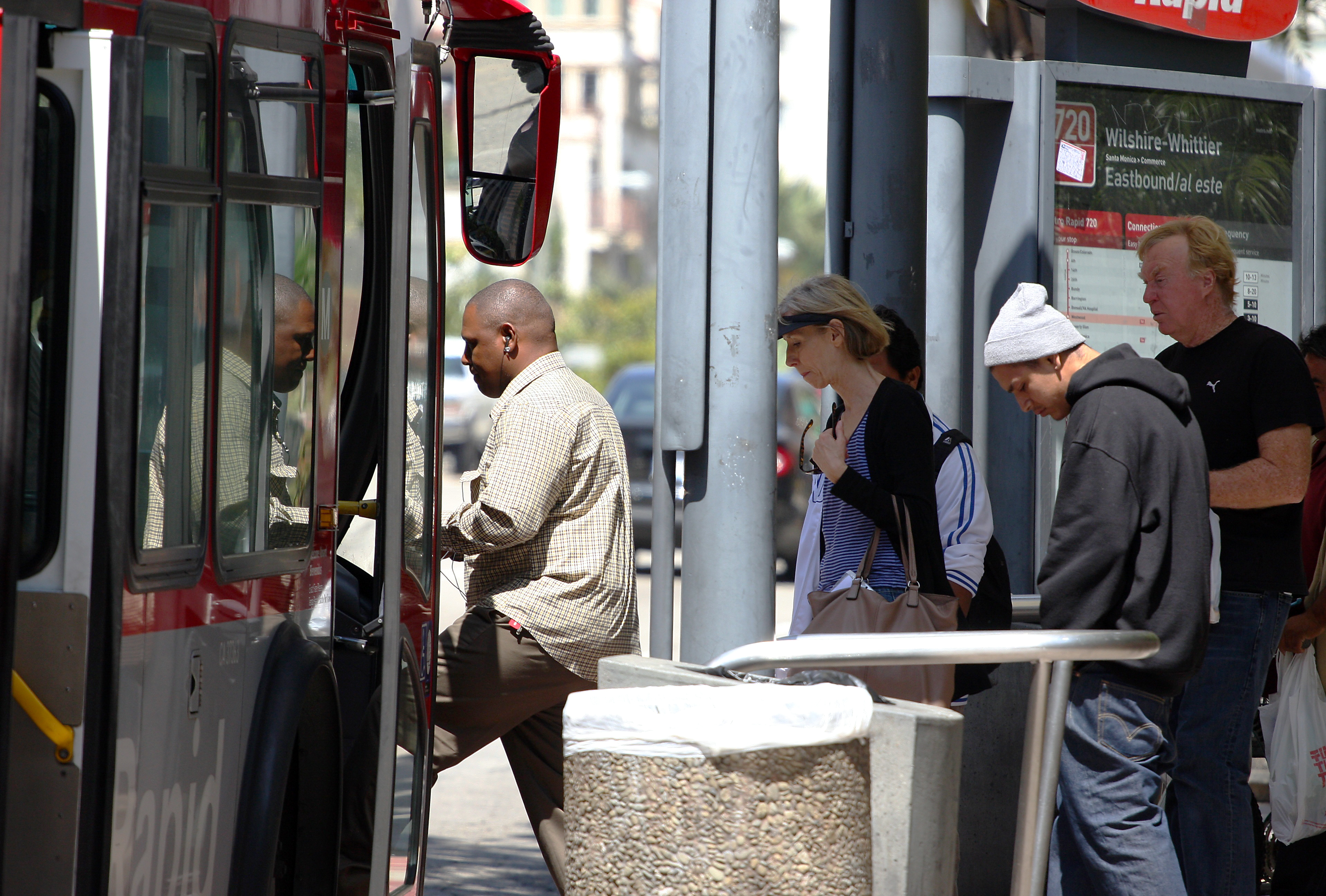The Los Angeles City Council approved plans for the city’s first bus-only lane last week, a move applauded by some UCLA staff and student groups.
Pending federal government approval, the curbside lane will run 7.7 miles on Wilshire Boulevard and be restricted to buses and bicycles during the peak hours of the day.
About 300 UCLA student and staff members use the Wilshire Boulevard bus corridor, said Dave Karwaski, manager of planning and policy for UCLA Transportation Services.
“It’s something that’s going to be great for UCLA students and staff and anybody else who’d rather not drive to campus,” said Juan Matute, program director of UCLA Program on Local Government Climate Action Policies.
The $31.5 million Bus Rapid Transit Project will create a corridor running between Wilshire Boulevard and Centinela Avenue, and Wilshire Boulevard and South Park View Street.
The city will need to convert the curbside lanes into a bus-specific lane and implement a number of construction improvements, such as repaving the lane to be more bike-friendly, said Rick Jager, spokesman for the Los Angeles County Metropolitan Transportation Authority.
Bus commuters could see travel times shortened by about 9-14 minutes, according to a Metro environmental impact report.
Herbie Huff, co-founder of the UCLA Bicycle Coalition and recent graduate of the masters program in urban planning, said she was actively involved in the process as a student. She drafted a letter used by the Bus Riders Union to show the societal and environmental benefits of the bus-only lane.
The letter was signed by 44 UCLA graduate students and professors, in addition to professors from other institutions and other transportation officials.
Huff also advocated for the project through her internship with the Los Angeles County Bicycle Coalition. She urged members of the group to attend meetings on the issue and to call upon their elected officials to support it. She also wrote blog posts about the issue.
In addition to making the street more bike-friendly, speeding more buses through the heavily trafficked Wilshire corridor is also intended to relieve congestion, since buses carry more people than single-driver cars, Jager said.
For Matute, who advocated for the project with Bruins for Transit, a group that works to improve transit access to UCLA, affordability was a big reason to support the project.
Matute said the rapid transit lane, which would make the trip into and out of downtown shorter, also will make the bus more attractive for students on a limited budget.
“This is not only about getting to campus, but for those who have internships downtown, it’s ridiculous if it takes 90 minutes to get downtown in terms of still getting educational schedule done, just to get work experience,” Matute said. “We don’t want a situation that only people who can drive and pay 15 dollars for parking every day can get those internships.”
But Karwaski said that the time shaved off the trip wouldn’t necessarily translate into increased ridership.
Other factors, like the high price of gasoline, may influence a motorist’s decision to take the bus, he said.
